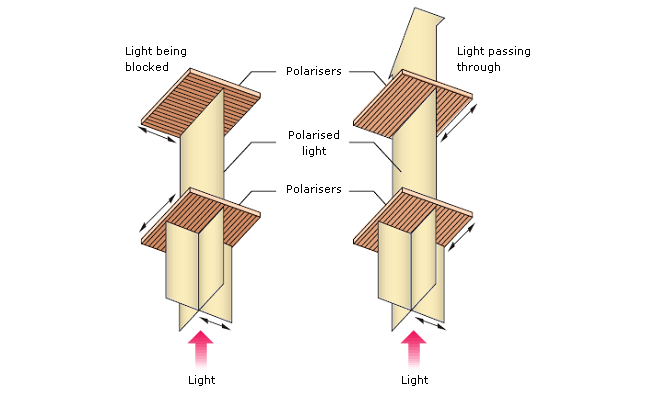 |
|
 |
 Overview of TFT-LCD modules Overview of TFT-LCD modules
Polariser
Polariser technicality
A polariser is an optical device that changes unpolarised light emitted from the backlight to linearly polarised light, meaning it transmits one component and blocks the other component. A pair of polarisers is placed perpendicular to each other, on either side of the panel, to control the intensity of the beams electronically. A pair of crossed polarisers would completely extinguish the transmission of light.
Polarisers are made of a thin sheet of anisotropic material that transmits one polarized component and absorbs the other component. This effect is known as optical dichroism. Dichroic material is usually synthesized by stretching polymer films, like polyvinyl acetate (PVA), that contain dichroic materials such as iodine.

How polariser works
A pair of polarisers sandwiches the TFT-LCD panel. The polariser on bottom of the TFT array is called the bottom or vertical polariser and the polariser on the top of the colour filter array is called the top or horizontal polariser. The top and bottom polarisers are placed perpendicular to each other. The bottom polariser channels light emitted from the backlight in one direction as it travels through the liquid crystal layer. The top polarizer blocks any light that has deflected. Together, the pair of polarisers control the intensity of light that passes through the colour filter, creating different grayscales.
|
|

























